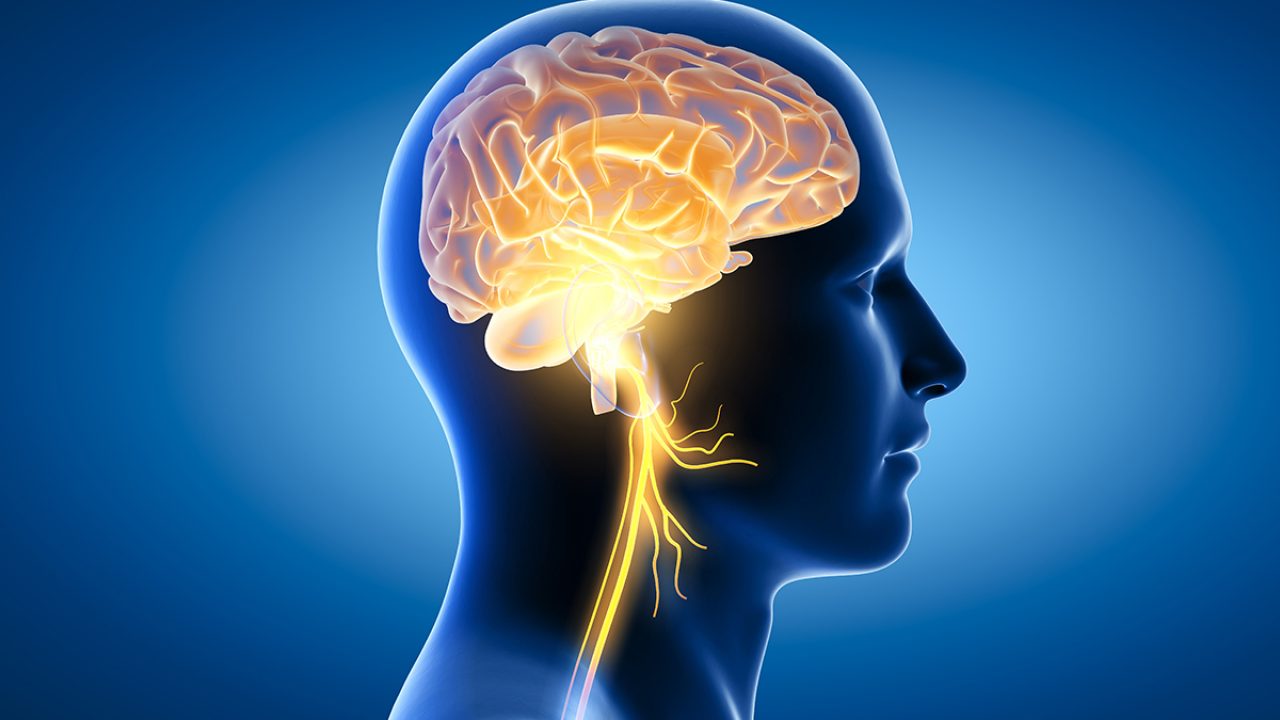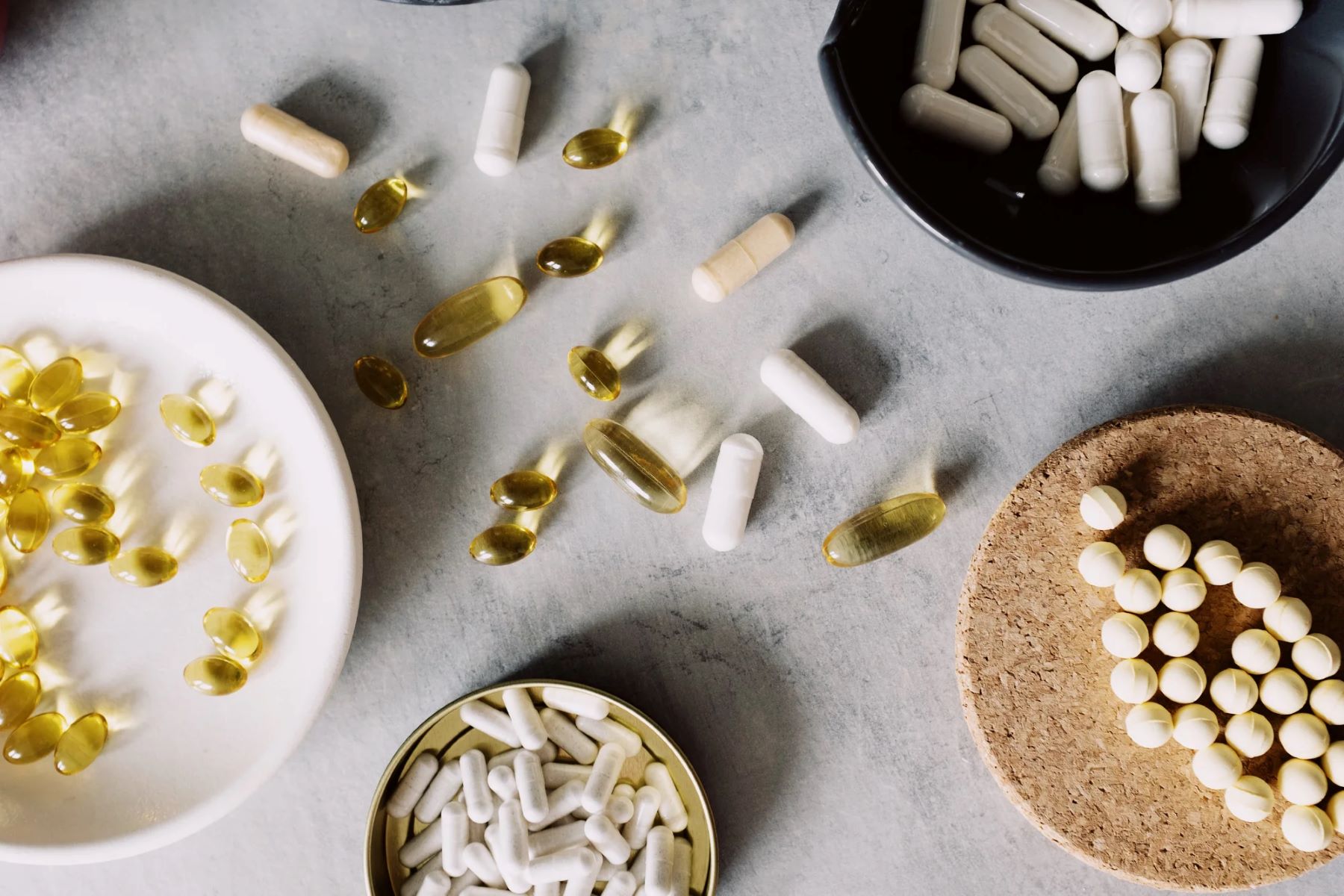Home>Misc>Featured>How Does Iron Deficiency Anemia Affect Athletic Performance?


Featured
How Does Iron Deficiency Anemia Affect Athletic Performance?
Modified: August 19, 2023
Discover how iron deficiency anemia can impact athletic performance and learn about the importance of iron for athletes. Featured article on athletic health and nutrition.
Introduction
Iron deficiency anemia is a common condition that occurs when the body lacks enough iron to produce adequate amounts of hemoglobin, the protein responsible for carrying oxygen to the body’s tissues. While this condition affects people of all ages and backgrounds, athletes are particularly susceptible to iron deficiency anemia due to the high physical demands they place on their bodies.
Iron plays a crucial role in the body’s ability to transport oxygen, synthesize energy, and maintain proper muscle function. When an athlete is deficient in iron, their body is unable to perform at its optimal level. This can significantly impact their athletic performance, endurance, and overall health.
Understanding how iron deficiency anemia affects athletes is essential for both athletes themselves and their coaches or trainers. By recognizing and addressing the symptoms of iron deficiency anemia early on, athletes can take the necessary steps to improve their iron levels and enhance their performance.
This article explores the effects of iron deficiency anemia on athletic performance, including the causes, symptoms, and ways it can impact an athlete’s physical and mental well-being. We will also provide insights into prevention and treatment strategies to help athletes optimize their iron levels and maintain peak performance.
Understanding Iron Deficiency Anemia
Iron deficiency anemia occurs when the body doesn’t have enough iron to produce adequate amounts of hemoglobin, the substance in red blood cells that enables them to carry oxygen. Iron is an essential mineral that is needed for various bodily functions, such as oxygen transportation, energy production, and muscle function. When iron levels are low, the body cannot produce enough healthy red blood cells, leading to anemia.
There are several causes of iron deficiency anemia. The most common cause is a lack of dietary iron. Iron-rich foods include red meat, poultry, fish, leafy green vegetables, and beans. However, some people may have difficulty absorbing iron from food due to certain medical conditions or surgeries, such as gastric bypass surgery.
In addition to dietary factors, blood loss can also contribute to iron deficiency anemia. This can occur through heavy menstrual periods, gastrointestinal bleeding, or repeated blood donations. Pregnancy can also increase the risk of iron deficiency anemia, as the body needs more iron to support the growing fetus.
Iron deficiency anemia can have a significant impact on an athlete’s performance and overall well-being. Without enough iron, the body cannot effectively transport oxygen to the muscles, leading to fatigue, decreased energy levels, and impaired physical performance.
It’s important to note that iron deficiency anemia is not limited to athletes. People from all walks of life can be affected by this condition. However, the physical demands placed on athletes’ bodies make them more susceptible to iron deficiency anemia and its negative effects on performance.
In the next sections, we will delve deeper into the causes, risk factors, and symptoms of iron deficiency anemia. Understanding these aspects will help athletes identify and address iron deficiency anemia early on, allowing them to optimize their performance and overall health.
Causes and Risk Factors
Iron deficiency anemia can have various causes and risk factors. Understanding these factors is crucial in identifying and addressing iron deficiency anemia in athletes.
One of the primary causes of iron deficiency anemia is a lack of dietary iron intake. Iron is obtained from food sources such as red meat, poultry, fish, and plant-based foods like spinach and beans. Athletes who follow restrictive diets, such as vegetarian or vegan diets, may have a higher risk of developing iron deficiency anemia if they do not carefully plan their meals to ensure adequate iron intake.
In some cases, even individuals who consume enough iron-rich foods may still develop iron deficiency anemia due to poor iron absorption in the body. Certain medical conditions like celiac disease, inflammatory bowel disease, or gastrointestinal surgeries can impair iron absorption, leading to iron deficiency anemia.
Blood loss is another common cause of iron deficiency anemia. Conditions that cause chronic bleeding, such as heavy menstrual periods, peptic ulcers, or gastrointestinal disorders, can deplete the body’s iron stores over time. Athletes involved in high-impact sports, such as running or boxing, may experience gastrointestinal bleeding due to the repetitive motion or trauma, further increasing their risk of iron deficiency anemia.
Athletes who engage in intense training or competitive sports are also at a higher risk of developing iron deficiency anemia. The physical stress placed on the body during exercise can lead to an increase in red blood cell breakdown and iron loss through sweat.
Furthermore, certain factors may increase an individual’s susceptibility to iron deficiency anemia. These risk factors include being female, especially during menstruation and pregnancy when iron demands are higher; being a vegetarian or vegan athlete; having a history of gastrointestinal disorders; and having a family history of iron deficiency anemia.
Awareness of these causes and risk factors is important for athletes and their healthcare providers to identify potential iron deficiency anemia early on. By understanding the underlying factors contributing to the condition, appropriate steps can be taken to prevent or address iron deficiency anemia in athletes.
Common Symptoms
Iron deficiency anemia can manifest in various symptoms, which can negatively impact an athlete’s performance and overall well-being. It is important for athletes and their support teams to be aware of these symptoms to identify and address iron deficiency anemia.
One of the most commonly observed symptoms of iron deficiency anemia is fatigue. Athletes may experience excessive tiredness, lack of energy, and a general feeling of weakness. This can significantly impair athletic performance and make it difficult to maintain the intensity and duration of workouts.
Another common symptom is shortness of breath, even with mild exertion. This is because the body’s reduced iron levels limit its ability to transport oxygen to the muscles. Athletes may find themselves gasping for air and unable to maintain their usual level of endurance.
Physical performance may also be negatively impacted by iron deficiency anemia. Athletes may notice a decline in their strength, speed, and overall athletic ability. Their muscles may feel weaker, and they may struggle to reach their usual performance milestones.
In addition to physical symptoms, iron deficiency anemia can also affect an athlete’s cognitive and psychological well-being. They may experience difficulties concentrating, impaired memory, and reduced mental alertness. This can impact their ability to make quick decisions and strategize effectively during training or competitive events.
Other common symptoms of iron deficiency anemia include pale skin, brittle nails, hair loss, headaches, frequent infections, and restless legs syndrome. Athletes may also experience a decreased appetite and have a greater susceptibility to colds and respiratory infections.
It is important to note that these symptoms may vary in severity and can be attributed to other factors as well. However, if athletes experience a combination of these symptoms or notice a decline in their performance, it is essential to consider the possibility of iron deficiency anemia and seek appropriate medical guidance.
In the next sections, we will explore the specific ways in which iron deficiency anemia can impact an athlete’s performance, endurance, and overall health.
Impact on Athletic Performance
Iron deficiency anemia can have a significant impact on an athlete’s performance, as it affects several key physiological processes necessary for optimal athletic ability.
One of the primary ways iron deficiency anemia hinders performance is by decreasing the delivery of oxygen to the muscles. Iron is a vital component of hemoglobin, the molecule responsible for carrying oxygen in red blood cells. When there is a shortage of iron, the body cannot produce enough hemoglobin, resulting in reduced oxygen-carrying capacity. As a result, athletes may experience increased fatigue, decreased endurance, and a lack of stamina during workouts or competitions.
Furthermore, iron deficiency anemia can impair energy production within the body. Iron is essential for the synthesis of adenosine triphosphate (ATP), which is the primary source of energy for muscle contraction. Inadequate iron levels hinder ATP production, leading to decreased energy levels, decreased power output, and slower recovery times for athletes.
Impaired muscle function is another consequence of iron deficiency anemia. Iron is involved in the activation of enzymes required for proper muscle contraction and relaxation. Without sufficient iron, muscle function may be compromised, leading to decreased strength, coordination, and overall performance.
In addition to the physical aspects, iron deficiency anemia can also affect an athlete’s cardiovascular health. Iron is necessary for the production of red blood cells, which carry oxygen to the muscles and organs. When iron levels are low, the body produces fewer red blood cells, resulting in a decrease in blood volume and the overall ability to supply oxygenated blood to the muscles. This can lead to decreased cardiovascular efficiency, increased heart rate, and reduced exercise capacity.
Psychological and cognitive effects are also observed in athletes with iron deficiency anemia. Low iron levels can impair cognitive function, including memory, attention, and reaction time. Athletes may find it difficult to concentrate, make decisions, and effectively plan their training strategies. Additionally, iron deficiency anemia can contribute to mood swings, irritability, and feelings of depression or anxiety, further impacting an athlete’s psychological well-being.
It is essential for athletes and their support teams to recognize the impact of iron deficiency anemia on performance. By addressing iron deficiency and optimizing iron levels, athletes can enhance their physical abilities, endurance, and overall athletic performance.
Decreased Oxygen Delivery to Muscles
One of the primary ways iron deficiency anemia impacts athletic performance is by decreasing the delivery of oxygen to the muscles. Iron is a crucial component of hemoglobin, the protein responsible for carrying oxygen in red blood cells. When iron levels are insufficient, the body struggles to produce enough hemoglobin, resulting in reduced oxygen-carrying capacity.
Oxygen is essential for energy production in the muscles, particularly during exercise. When muscles are working, they require an adequate supply of oxygen to generate energy efficiently. However, in athletes with iron deficiency anemia, this oxygen supply is compromised, leading to decreased performance and endurance.
During physical activity, such as running or weightlifting, muscles require a higher oxygen supply to meet the increased energy demands. When the body lacks sufficient iron, the ability to transport oxygen to the muscles is impaired. As a result, athletes may experience increased fatigue, shorter endurance, and reduced exercise capacity.
The reduced oxygen supply to the muscles hampers aerobic metabolism, which is the process by which the body breaks down glucose and fat to produce ATP, the energy currency of cells. When oxygen levels are inadequate, the body shifts towards anaerobic metabolism, which is less efficient and leads to the production of lactic acid. This buildup of lactic acid can cause muscle fatigue, cramping, and a burning sensation during exercise, further impeding performance.
In addition to impairing energy production and causing fatigue, decreased oxygen delivery to the muscles can also negatively impact muscle function. Oxygen is essential for optimal muscle contraction and relaxation. Without sufficient oxygen, muscles may not perform at their peak, leading to decreased strength, coordination, and overall athletic performance.
It’s worth noting that endurance athletes, such as distance runners or cyclists, may be more significantly affected by decreased oxygen delivery due to the extended duration of their activities. These athletes heavily rely on oxygen to sustain performance over long periods. Iron deficiency anemia can be particularly detrimental to their aerobic capacity and endurance.
To mitigate the effects of decreased oxygen delivery, athletes with iron deficiency anemia should focus on improving their iron status. This can be achieved through dietary adjustments, such as increasing consumption of iron-rich foods like lean meats, seafood, leafy greens, and legumes. In some cases, iron supplementation may be recommended under the guidance of a healthcare professional.
By addressing the decreased oxygen delivery to muscles through optimizing iron levels, athletes can enhance their endurance, improve performance, and better meet the energy demands of their rigorous training and competition regimens.
Reduced Energy Production
Iron deficiency anemia significantly impacts an athlete’s energy production, which can hinder their overall performance and athletic abilities. Iron plays a vital role in the synthesis of adenosine triphosphate (ATP), the primary source of energy for muscle contraction.
ATP is necessary for various processes within the body, including muscle contractions, nerve impulses, and enzyme reactions. When iron levels are low, the production of ATP is compromised, leading to reduced energy availability for the muscles.
During exercise, the demand for ATP increases as muscles require energy to perform contractions. In athletes with iron deficiency anemia, the limited availability of ATP can result in decreased power output, reduced strength, and diminished overall performance.
In addition to impairing energy production, iron deficiency anemia also affects the body’s ability to replenish ATP stores efficiently. The depletion of iron results in lowered capacity for ATP resynthesis, impacting an athlete’s ability to recover and regenerate energy between workouts or competitions.
The lack of sufficient energy production in athletes with iron deficiency anemia can lead to early fatigue and decreased stamina during physical activity. Athletes may feel a lack of energy, experiencing difficulties in sustaining high-intensity efforts or prolonged exercise sessions.
Frequent fatigue not only affects an athlete’s physical performance but also has a psychological impact. Fatigue can decrease motivation, mental focus, and overall enjoyment of training and competition. Athletes may find it challenging to maintain their regular training routine or push themselves to their full potential.
To address reduced energy production caused by iron deficiency anemia, athletes should focus on optimizing their iron levels. This can be achieved through dietary modifications, including the consumption of iron-rich foods such as lean meats, fortified grains, nuts, and seeds.
In cases where diet alone may not be sufficient, iron supplementation may be necessary under the guidance of a healthcare professional. However, it is crucial to consult with a healthcare provider before starting any supplementation regimen to ensure proper dosage and avoid potential side effects.
By addressing reduced energy production through optimizing iron levels, athletes can improve their energy availability, enhance their performance, and maintain the energy levels necessary for their athletic endeavors.
Impaired Muscle Function
Iron deficiency anemia can have a detrimental impact on an athlete’s muscle function, hindering their performance and overall athletic ability. Iron plays a crucial role in the activation of enzymes necessary for proper muscle contraction and relaxation.
When iron levels are insufficient, essential enzymes involved in muscle function cannot function optimally. This impairment can lead to decreased strength, coordination, and overall muscle performance. Athletes may find it challenging to generate the force required for explosive movements or maintain proper technique during workouts or competitions.
In addition, iron is essential for the synthesis of myoglobin, a protein found in muscle cells that stores and transports oxygen within the muscle tissue. Iron deficiency impairs the production of myoglobin, reducing its availability to muscles. This can negatively impact the muscles’ ability to receive and utilize oxygen, leading to decreased aerobic capacity and endurance.
Impaired muscle function due to iron deficiency anemia can manifest in various ways. Athletes may experience muscle weakness, decreased power output, and difficulties in maintaining proper muscle tone. They may also notice increased muscle fatigue and slower recovery times following intense exercise.
Frequent muscle cramps and spasms are also common in athletes with iron deficiency anemia. These involuntary muscle contractions can be painful and disruptive to training or competition. The lack of sufficient iron impairs the regulation of muscle contractions and relaxations, contributing to these muscle abnormalities.
Furthermore, iron deficiency anemia can lead to an imbalance in muscle fiber types. Iron deficiency has been associated with a shift toward a higher proportion of fast-twitch muscle fibers, which are responsible for explosive, short-duration movements. This shift can disadvantage athletes who rely on slow-twitch muscle fibers for activities that require endurance and sustained effort.
To address impaired muscle function caused by iron deficiency anemia, athletes should prioritize optimizing their iron levels. This can be achieved through a well-balanced diet that incorporates iron-rich foods such as lean meats, seafood, dark leafy greens, and fortified cereals.
In some cases, iron supplementation may be necessary, especially if dietary modifications alone are insufficient. It is important to consult with a healthcare professional before starting any iron supplementation regimen to ensure proper dosage and monitor iron levels over time.
By addressing impaired muscle function through optimizing iron levels, athletes can improve their muscle performance, strength, and endurance, enabling them to reach their full athletic potential.
Increased Fatigue and Decreased Endurance
Iron deficiency anemia can have a significant impact on an athlete’s energy levels, leading to increased fatigue and decreased endurance. Iron is an essential component of hemoglobin, the protein responsible for carrying oxygen to the muscles and tissues. When iron levels are low, the body’s ability to transport oxygen is compromised, resulting in reduced energy production and fatigue.
During physical activity, muscles require a constant supply of oxygen to generate energy and sustain performance. In athletes with iron deficiency anemia, the limited oxygen-carrying capacity of the blood leads to inadequate oxygen delivery to the muscles. This oxygen deficit impairs the muscles’ ability to generate energy efficiently, resulting in increased fatigue and decreased endurance.
As athletes continue to exercise with low iron levels, their fatigue often intensifies. This fatigue can manifest as a general feeling of tiredness, lack of motivation, reduced stamina, and decreased willingness to exert effort. Athletes may find it challenging to maintain their usual training intensity or reach their performance goals.
In addition to increased tiredness, iron deficiency anemia can also lead to decreased endurance. Endurance activities, such as long-distance running, cycling, or swimming, depend heavily on the body’s ability to sustain prolonged effort. Without sufficient iron, an athlete’s muscles will tire more quickly, limiting their capacity to maintain a steady pace or push themselves to their full potential.
The reduction in endurance can also be attributed to the inefficiency of the body’s energy systems. Iron deficiency anemia impairs the synthesis of adenosine triphosphate (ATP), the main energy source for muscle contraction. The diminished ATP production results in reduced energy reserves and a slower rate of recovery between exercise bouts, further contributing to decreased endurance.
It’s important for athletes to recognize the signs of increased fatigue and decreased endurance as potential indications of iron deficiency anemia. By addressing and correcting iron levels through dietary modifications and, if necessary, iron supplementation, athletes can improve their energy levels, enhance endurance, and regain their competitive edge.
Negative Effects on Cardiovascular Health
Iron deficiency anemia can have detrimental effects on an athlete’s cardiovascular health, impacting their overall performance and well-being. Iron is a crucial component in the production of red blood cells, which carry oxygen to the body’s tissues.
When iron levels are low, the body’s ability to produce an adequate number of red blood cells is impaired. This leads to a decrease in blood volume and a reduced ability to deliver oxygen to the muscles and organs during exercise.
The decreased oxygen-carrying capacity resulting from iron deficiency anemia can significantly impact cardiovascular health. The heart has to work harder to pump oxygen-depleted blood and compensate for the lack of oxygen delivery to the various tissues and organs in the body.
As a result of the increased workload, the heart may experience an elevated heart rate during exercise. Athletes with iron deficiency anemia may notice that their heart rate rises more quickly and stays elevated for longer periods compared to when their iron levels are optimal. This can lead to feelings of fatigue, shortness of breath, and a diminished ability to sustain intense physical activity.
Iron deficiency anemia can also contribute to a decreased exercise tolerance. Due to the reduced oxygen supply, athletes may find it difficult to perform at their usual intensity or maintain their target heart rate during workouts. This reduced exercise tolerance may negatively impact training sessions and hinder progress in athletic performance.
Furthermore, athletes with iron deficiency anemia may be at a higher risk of developing cardiovascular conditions such as irregular heart rhythms (arrhythmias) or heart murmurs. The lack of sufficient iron can make the heart more prone to these abnormalities, which can further impact cardiovascular health and performance.
It is crucial for athletes to address and correct iron deficiency anemia to protect their cardiovascular health. By optimizing iron levels through dietary modifications and, if necessary, iron supplementation, athletes can improve their blood’s oxygen-carrying capacity and ensure proper cardiovascular function.
Regular monitoring of iron levels, particularly in endurance athletes, is recommended to maintain a healthy cardiovascular system and enhance overall athletic performance.
Psychological and Cognitive Effects
Iron deficiency anemia can have significant psychological and cognitive effects on athletes, impacting their mental well-being and cognitive function. Iron is essential for the normal functioning of the brain and its neurotransmitter systems.
Cognitive impairment is commonly observed in athletes with iron deficiency anemia. Iron is necessary for optimal brain function, including memory, attention, and information processing. When iron levels are low, athletes may experience difficulties in concentration, memory recall, and decision-making.
Iron deficiency anemia can affect an athlete’s ability to focus and stay mentally alert during training or competition. Athletes may find it challenging to maintain attention to detail, resulting in decreased performance and increased errors. This can be particularly problematic in sports that require quick decisions or strategic thinking.
The lack of sufficient iron can also contribute to mood disturbances, such as irritability, anxiety, or depression. Athletes may experience mood swings or heightened emotional sensitivity, which can further impact their overall well-being and motivation to train and compete.
Furthermore, iron deficiency anemia can lead to changes in the sleep-wake cycle. Athletes may have difficulties falling asleep or staying asleep throughout the night. This disruption in sleep patterns can negatively impact recovery, impair cognitive function, and exacerbate fatigue and mood disturbances.
The psychological and cognitive effects of iron deficiency anemia can create a challenging cycle for athletes. The physical impacts of the condition can lead to decreased performance, which can in turn contribute to increased stress and negative emotions.
To address the psychological and cognitive effects of iron deficiency anemia, athletes should prioritize optimizing their iron levels. This can be achieved through dietary adjustments, including the consumption of iron-rich foods such as lean meats, fortified grains, and green leafy vegetables.
In cases where iron levels do not improve sufficiently through diet alone, iron supplementation may be necessary. It is important to consult with a healthcare professional before starting any supplementation regimen to ensure appropriate dosage and monitor iron levels over time.
By addressing the psychological and cognitive effects through optimizing iron levels, athletes can improve their mental well-being, cognitive function, and overall performance in training and competition.
Prevention and Treatment Strategies
Prevention and early intervention are key in addressing iron deficiency anemia in athletes. By implementing effective strategies, athletes can optimize their iron levels and minimize the impact on their performance and overall health.
One of the most crucial prevention strategies is to maintain a well-balanced diet that includes adequate iron intake. Iron-rich foods should be incorporated into meals, such as lean meats, fish, poultry, beans, lentils, leafy green vegetables, and fortified grains. Combining these iron-rich foods with sources of vitamin C, such as citrus fruits or berries, can enhance iron absorption.
Athletes, particularly those following restrictive diets or at higher risk of iron deficiency anemia, should consider consulting with a registered dietitian or sports nutritionist to develop a meal plan that meets their nutritional needs and supports optimal iron levels.
Regular monitoring of iron levels is crucial for athletes, especially those involved in intense training or endurance sports. Blood tests can identify iron deficiency early on, allowing for prompt intervention. Athletes should work closely with their healthcare provider to establish a suitable monitoring schedule.
In cases where dietary modifications alone are insufficient to address iron deficiency anemia, iron supplementation may be necessary. It is important to consult with a healthcare professional before starting any iron supplementation regimen to determine the appropriate dosage and ensure proper monitoring of iron levels. Excessive iron intake can have adverse effects on health, so professional guidance is crucial.
Athletes should also consider factors that can enhance or inhibit iron absorption. For example, calcium and tannins found in some foods can impair iron absorption, so it is advisable to avoid consuming them together with iron-rich foods. On the other hand, vitamin C can enhance iron absorption, so incorporating foods rich in vitamin C alongside iron sources can be beneficial.
Lastly, rest and recovery are essential components of preventing and treating iron deficiency anemia. Adequate sleep, stress management, and adequate time for recovery between strenuous workouts can help athletes maintain optimal iron levels and overall health.
By implementing these prevention and treatment strategies, athletes can optimize their iron levels, improve their performance, and ensure their overall well-being. Regular monitoring, proper nutrition, and a well-rounded training regimen that includes adequate rest and recovery will contribute to long-term athletic success and mitigate the risks associated with iron deficiency anemia.
Conclusion
Iron deficiency anemia can have a significant impact on an athlete’s performance, endurance, and overall well-being. Understanding the effects of iron deficiency anemia and implementing appropriate prevention and treatment strategies are crucial for athletes and their support teams.
Iron deficiency anemia, characterized by a lack of iron in the body, can lead to decreased oxygen delivery to the muscles, reduced energy production, impaired muscle function, increased fatigue, and decreased endurance. It can also have negative effects on cardiovascular health, psychological well-being, and cognitive function.
Awareness of the causes and risk factors, such as inadequate iron intake, blood loss, and the physical demands of intense training, is imperative to identify and address iron deficiency anemia in athletes. Common symptoms, including fatigue, shortness of breath, reduced strength, and cognitive difficulties, should be recognized and investigated further.
Prevention and treatment strategies are key in addressing iron deficiency anemia. These include optimizing iron intake through a well-balanced diet that incorporates iron-rich foods, monitoring iron levels through regular blood tests, considering supplementation under healthcare professional guidance if necessary, and optimizing rest and recovery.
By addressing iron deficiency anemia, athletes can improve their energy levels, muscle function, cardiovascular health, cognitive abilities, and overall athletic performance. Optimizing iron levels not only enhances physical performance but also contributes to improved mental well-being and overall quality of life.
Ultimately, by understanding the impact of iron deficiency anemia on athletic performance and taking proactive steps to prevent and address it, athletes can unlock their full potential and achieve their goals in their respective sports.









